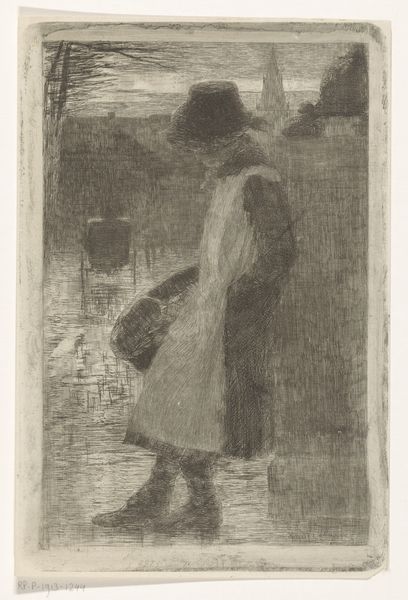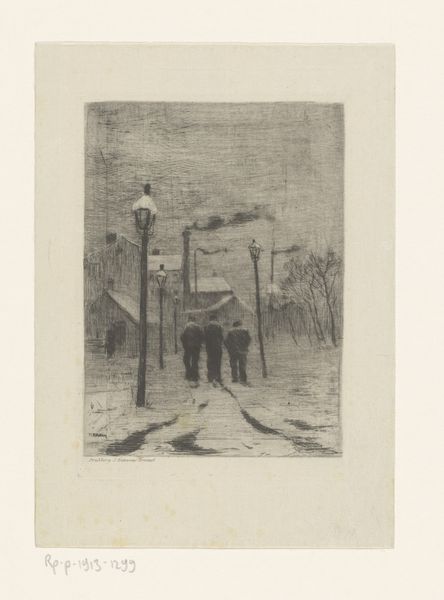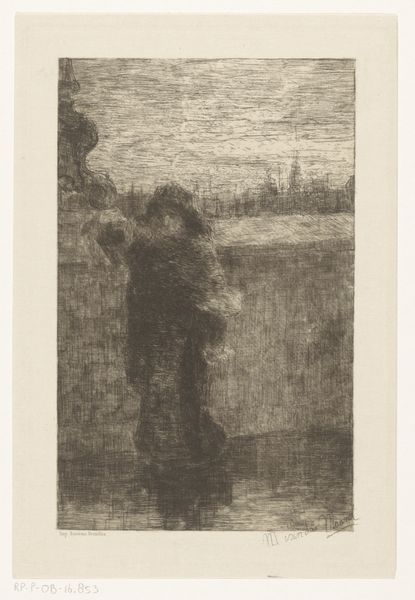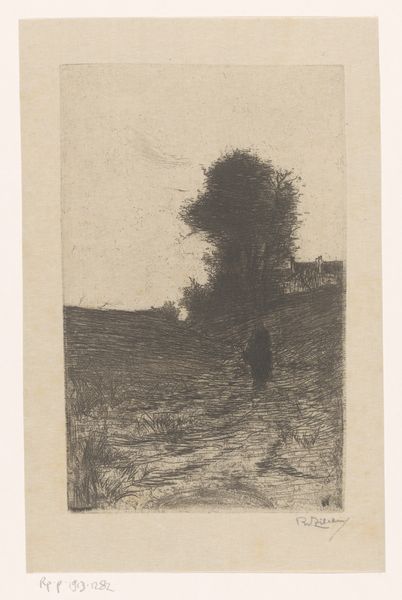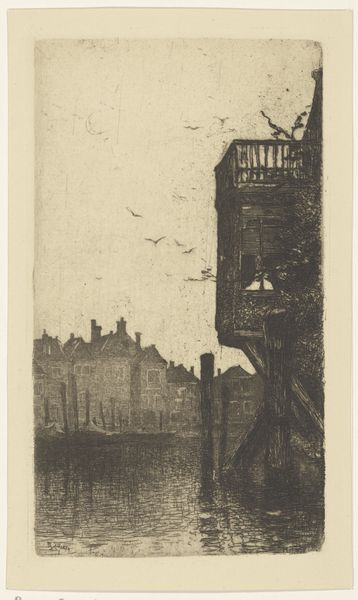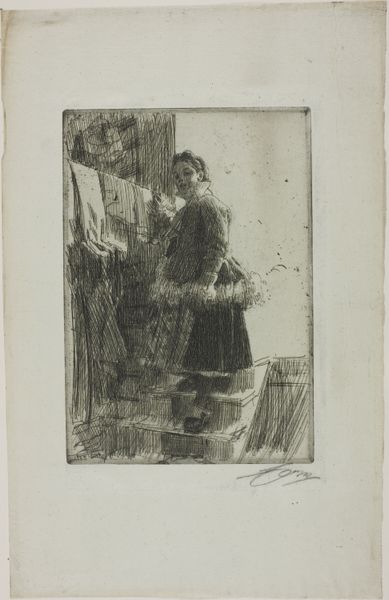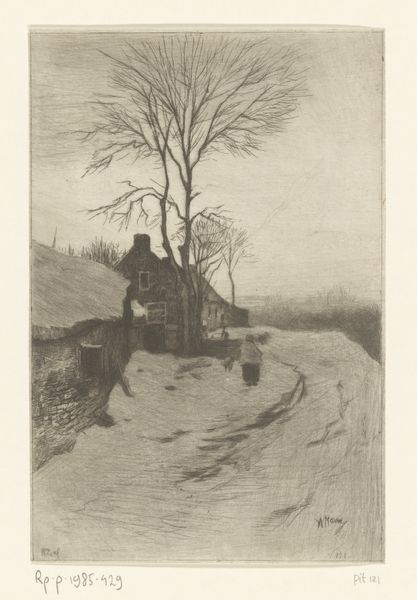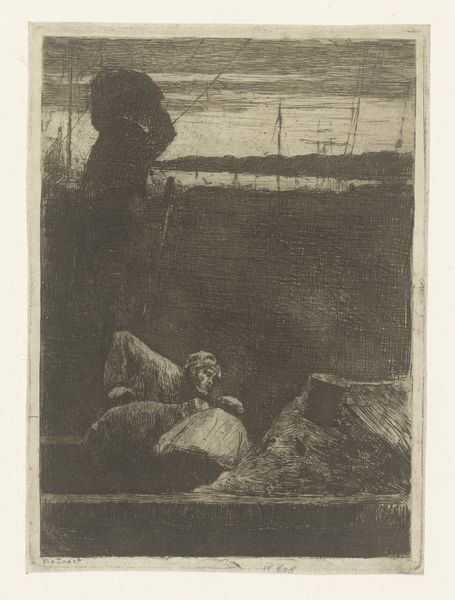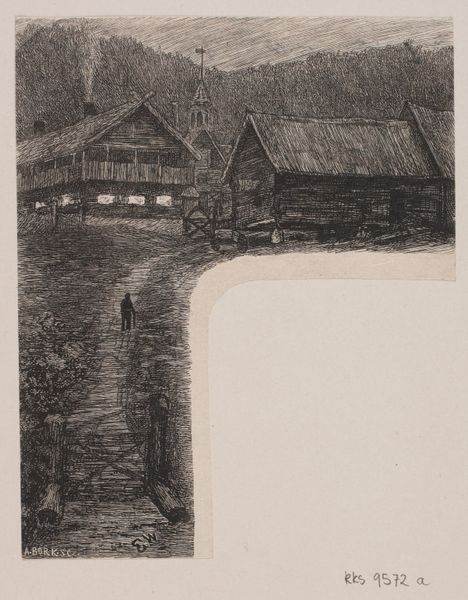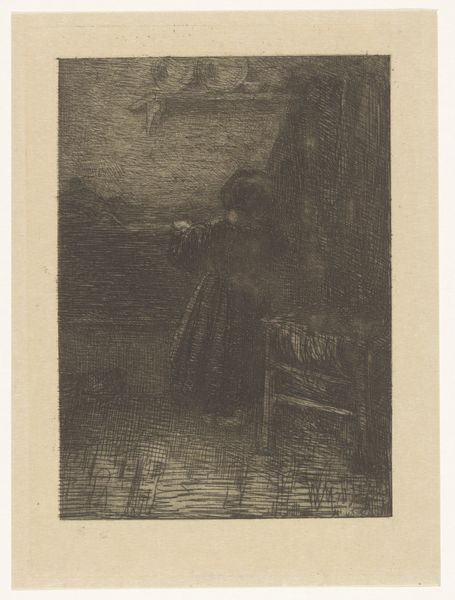
Dimensions: Plate: 10 15/16 × 7 7/8 in. (27.8 × 20 cm) Sheet: 13 11/16 × 9 5/16 in. (34.7 × 23.7 cm)
Copyright: Public Domain
Curator: Before us, we have Anders Zorn's "Fisherman at Saint Ives," created in 1891. The work is an etching and a print, showcasing a stunning landscape viewed from a high vantage point. Editor: There's such a melancholy air about this print, isn't there? The grainy texture seems to amplify the distance in the scene. Curator: Precisely. Note how Zorn utilizes the etching technique to define spatial relationships. The stark contrast enhances depth through the tonal range—the light source from either the moon or streetlight establishes geometric balance in relation to the figures, drawing focus up to the town's edge. Editor: Thinking about the cultural context of late 19th century port towns like Saint Ives, I see these figures perched above. It feels less like admiration and more like detached observation. The composition reinforces a social distance. Curator: A very astute point. But also note how Zorn uses his marks to emphasize a sense of naturalism— the woman’s skirt is captured through distinct etched lines conveying fabric, light and volume which offers an insight into Zorn's manipulation of lines for diverse textures. Editor: This technique serves more than just a visual purpose. Ports were vital centers of economic exchange, however with rampant unsanitary conditions for the working-class and outbreaks of disease such scenes highlight disparities, a separation perhaps from the realities of coastal life? Curator: An important aspect for understanding the social implications reflected within artworks of the era. What I also gather from this work is its engagement of capturing everyday existence, its candid simplicity and balance which offer insights into Zorn's artistic philosophy. Editor: Considering its layered approach—a fusion of formal strategies with acute societal awareness—this image becomes an invitation to question and re-evaluate how artists frame socio-historical environments. I found our chat has reframed how I considered it. Curator: I completely agree. What a powerful testament to Zorn’s sensitivity and insight into spatial dimension and social nuance.
Comments
No comments
Be the first to comment and join the conversation on the ultimate creative platform.
